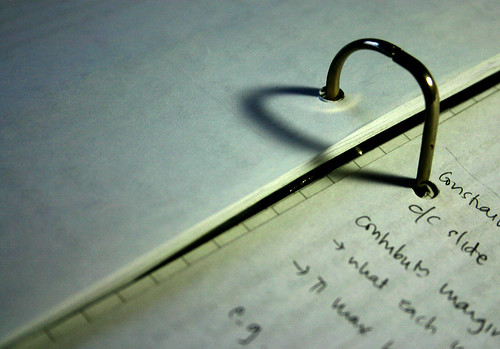 |
| Pen and Paper by mlpdesign via Flickr |
I know poems have shapes. I've even seen a poem about a rabbit crafted in the shape of a carrot in forum for an online class I was taking. People can get creative with their forms, certainly, but I've never thought about a poem being organized in a thematic shape.
While I don't think a lot of poems are crafted with this in mind, I find it interesting to observe poems with a possible thematic shape in mind. Jack states that in some poems, "the poet's aesthetic sense and the perceptions stemming from the topic create the organizing principle that composes the poem's thematic shape."
The end of the chapter offers writing exercises according to both argumentative and natural shapes. I've shared one from each below along with the example Jack offers:
Argumentative Shapes - Centripetal
Holding the thesis of your poem in mind, associate images, scenes, and tropes located outside the immediate situation but whose connotations move the material inward toward the unstated central thesis.
An example of this shape is Louis Simpson's "The Silent Piano."
Natural Shapes - Circular
In your closure, return to the same idea that your opining lines suggest, but do so as an "enriched restatement." An example of this shape is one of my favorite poems, Mark Strand's "Keeping Things Whole."
--
And now, because it is Valentine's Day, a centrifugal thematic shaped poem (I think): The Meaning of Zero: A Love Poem by Amy Uyematsu.
Do you have a favorite Valentine's or Anti-Valentine's Day poem or story?




